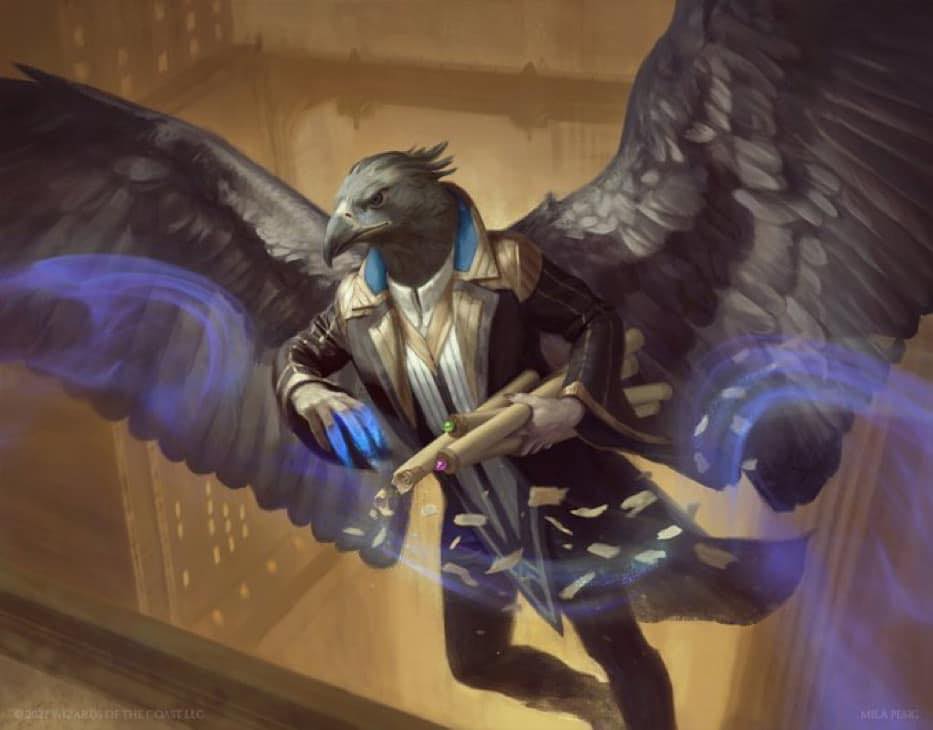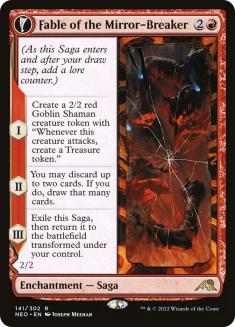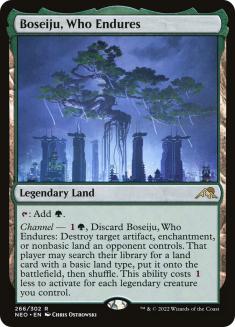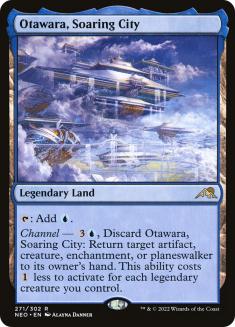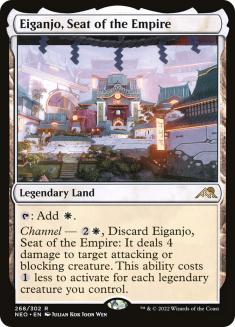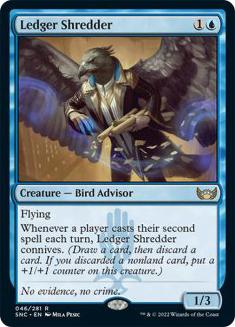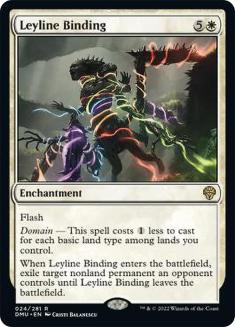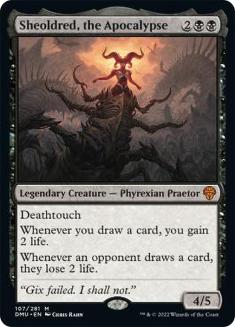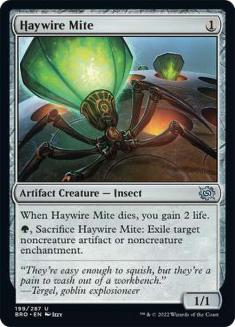There were more sets and cards released in 2022 than ever before, and anyone who tried to keep up with it all was overwhelmed months ago. [Copy Editor’s Note: “Fblthp whimpered.“] Luckily, my beat here focuses on the mainstream Constructed formats, which only had to care about the same number of sets as any other year (spare a thought for your local Legacy boomer here – if you don’t know what the words on Seasoned Dungeoneer mean, turn back now before it’s too late!). I thought it would be worthwhile to end the year with a look at each of these sets and their main contributions to Constructed.
Kamigawa: Neon Dynasty
For over fifteen years, the original Kamigawa block was the go-to example for why you can’t please everyone. Mark Rosewater was deluged with requests to return to Kamigawa from players committed enough to read a game design blog, and always replied that the silent majority hated Kamigawa in their market research across the years. The legendary theme fell flat at a time before Commander or even Elder Dragon Highlander meant anything to most, and the allusions to Shinto mythology were too obscure for a mainstream audience. Going back to Kamigawa would mean moving past all the baggage that made it flop last time, without losing what made it resonate with that vocal minority.
This trip to Kamigawa approached that problem from a new angle – this futuristic Kamigawa felt like a whole new world that was still keenly aware of its history. Balancing technology and antiquity is a time-honored tradition in fantasy, but difficult to pull off. Kamigawa: Neon Dynasty managed to do it – my only complaint is that there’s so much there that some of it feels sidelined when there’s only one set to enjoy it.
Fable of the Mirror-Breaker
Fable of the Mirror-Breaker is the card of the set and probably the card of the year. It has made waves in every Constructed format from Standard to Legacy, and was so ubiquitous in Standard that there were convincing arguments for it being banned.
This would shock people a year ago – the card received zero attention during the preview season and was a dollar rare for several weeks. Its breakout performance was the Alchemy portion of the Neon Dynasty Championship – but only a few testing groups played it there, and one of them only did so because some unknown Japanese player beat them with it on the ladder. Fable is perhaps the best example in recent memory of the community collectively overlooking a card. Why did this happen, and how can we be more careful next time?
In broad terms, it’s hard to evaluate cards that do a little bit of everything, especially when that description applies to so much of the competition too. Each individual element seems lacking in some way. The 2/2 Goblin token from the first chapter has poor stats and can rarely survive combat, the rummaging from the second chapter is too late if you are digging for something urgently, and activating Reflection of Kiki-Jiki looks slow and unrealistic if you’ve been spoiled by the original Kiki-Jiki, Mirror-Breaker.
It only takes a few games to see how strong Fable is, but that highlights another wrinkle. With few tournaments on the calendar, you can’t see the card performing well in another format and extrapolate to the one you care about. The Limited-to-Constructed pipeline, where a card overperforms in Draft and earns an audition in Standard, doesn’t exist in the same way when Standard barely exists and Limited players have fewer incentives to play Constructed (and vice versa). There are many reasons that Fable took a while to catch on – but, now that it has, we’ll be seeing it for years to come.
Legendary Lands
The legendary lands may have the longest lifespan of any cards printed this year. The first copy of the legendary land(s) in your colours is automatic, unless there is a strong incentive to care about things like basic land types (such as Leyline Binding or other domain cards), and it’s easy to talk yourself into more copies. Cards like Fable are all the rage right now, but it’s conceivable that they will have faded from non-rotating formats in a few years – but the most popular Gruul deck in whatever Pioneer successor emerges in 2025 will almost certainly have a Boseiju, Who Endures and a Sokenzan, Crucible of Defiance.
Is that a good thing? A choice that feels ‘free’ isn’t a real choice at all, but if that Boseiju would just be another basic Forest instead, that’s not a choice either. If every deck has access to its colours’ legendary lands, that adds a type of repetition to gameplay, but those cards create unique possibilities that wouldn’t be present otherwise, like Sokenzan allowing some midrange or control deck to create a crucial battlefield presence out of nowhere. Your Mono-White Humans deck gets to make ambitious attacks because the mere presence of the one Eiganjo, Seat of the Empire in the deck creates a threat the opponent must consider – and it’s the fact that it’s so free to include, and thus so likely that you run one, that forces them to keep it in mind and makes these semi-bluffs possible!
Boseiju and Otawara, Soaring City are the most relevant examples. The one Otawara in decks like Izzet Phoenix in Pioneer or Izzet Tempo in Modern gives them at least a single temporary answer to cards that otherwise would be impossible to remove once resolved. Boseiju is not just a Naturalize for people who don’t want to spend a whole slot on a Naturalize, it’s an unusually maindeckable way to answer problematic lands.
If that part annoys you, you were probably up to no good – it’s nice to have even more answers to Urza’s Tower and friends – but otherwise it’s more ambiguous. Decks based around a particular artifact or enchantment – like the Jeskai Ascendancy deck in Pioneer that I used to qualify for a Set Championship at the very start of the year – have often relied on that card being difficult for most decks to interact with pre-sideboard, and the fact that most decks can now fix that without even trying is a tough pill to swallow. On balance, I think it’s healthy that you don’t have to feel totally helpless against these cards or strategies without making big sacrifices elsewhere – and the printing of cards like Boseiju is what lets you take risks in design on cards like Jeskai Ascendancy.
Streets of New Capenna
Streets of New Capenna also had the burden of high expectations, but failed to meet them. As the first multicolour set focusing on the Shard tricolour combinations since the eponymous Shards of Alara, fans of Jund and Esper and all the rest (ok, mostly Jund) could expect some impressive cards with enough power to reward you for those colour commitments.
What we got instead was an imbalanced spread of gold cards where the best of the bunch – Raffine, Scheming Seer and… Corpse Appraiser? – just about made it into Standard, and the rest flopped entirely. The set struggled to resonate from a flavour perspective too – the urban conflict theme felt similar to parts of Ravnica, where the guild colour pairs had a more developed and distinct identity than the more amorphous three-colour combinations that had to define themselves in a single set.
Ultimately, the set’s lasting legacy is Ledger Shredder. As a two-drop that rewards you for casting cheap spells and offers card filtering while enabling graveyard synergies, this card is tailor-made for Constructed success in a way that scales with the size of a format – Shredder is barely playable in Standard but a fixture of Pioneer and Modern. I love the card, and it shows off one of the set’s mechanics nicely, but the flagship card ought to be something like a Siege Rhino or Mantis Rider for these shards instead.
Dominaria United
After the mixed success of these experiments, Dominaria United was a strong execution of a safer concept. We’ve spent so long on Dominaria in the past that we know the right notes to hit, and this set managed that.
Despite what official sources may tell you, Leyline Binding didn’t shake up Legacy, but it made its mark elsewhere. It’s tough to calibrate removal spells like this for a world where trading one-for-one is a losing proposition most of the time. Leyline Binding hits the sweet spot of powerful but conditional enough that you have to work for it. Fetchlands plus Triomes and shocklands make that job much easier in Modern, but even there you have to figure out if and how to unlock that fifth land type for the full discount, and you now have interesting tension with non-typed lands like the Neon Dynasty legendary lands mentioned above.
An honourable mention has to go to Sheoldred, the Apocalypse. If tweaking the answers is difficult these days, getting the threats right is no easier, and Sheoldred offers a template for how a four-mana threat that is more of a Baneslayer than a Mulldrifter can be strong enough to demand removal (and to flourish in a world of good removal) without being totally suffocating. An unanswered Sheoldred will dominate the game, but that’s what you expect from a four-mana card like that if it survives for several turns – and its exact impact depends heavily on what each player pairs or fights it with.
The Brothers’ War
When 2022’s release schedule was announced, The Brothers’ War was the set that really got me excited – an exploration of some of Magic’s deepest lore in an artifact-themed set that would get my gears turning. When we finally arrived there, I wasn’t disappointed – but I couldn’t help feeling that I’d forget about the set by this time next year.
My old colleague and co-host Ari Lax pointed out that this set may in fact represent one skirmish in a larger war. With Phyrexia: All Will Be One and March of the Machine on the horizon, artifacts will be Magic’s primary focus for the next few months, and a set that offers useful cogs for that larger machine will look more important in retrospect.
With that in mind, my pick for this year’s final expansion is Haywire Mite. It is unprecedented in stapling green’s usual artifact and enchantment removal onto an artifact that works with any cards that look for those – many Modern decks have a single Haywire Mite for their Urza’s Saga that does a lot more work than your average one-of – and acts as a welcome insurance policy against whatever artifact terrors lie in wait next year.
As we wait for this latest Phyrexian story arc to become compleat – I, for one, welcome our new Phyrexian overlords – I hope that the next batch of sets allows formats like Pioneer and Modern to continue their promising trajectory.

